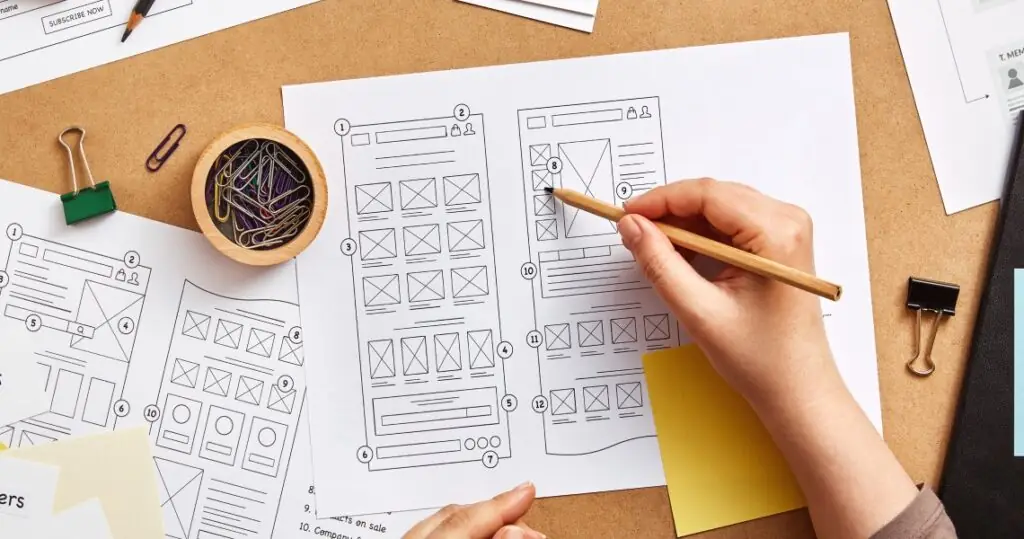
An effective landing page is the foundation of any successful online marketing strategy. There are several landing page best practices—ranging from content to design—you can implement to help you craft a page that helps increase conversion rates and lower your cost-per-acquisition. Explore our guide to help you understand what a landing page is and how to build one that drives results.
A landing page is a web page created to convert visitors into leads. Each page contains a lead form that asks visitors for their contact information in exchange for an offer like an ebook or coupons for your product. A well-made landing page allows you to target and convert a higher percentage of visitors into leads, while also collecting information about who they are and what platform they’ve converted on.
There are two main types of landing pages marketers rely on: click-through landing pages and lead-generation landing pages. Click-through landing pages prompt visitors to click through the landing page to arrive at the product pages where the transaction will occur. Lead generation landing pages allow you to collect data—like names and email addresses—about your site’s visitors.
Why would you want to create a unique page just for customers to fill out a form? Landing pages can help increase your conversion rates and lower your cost-per-acquisition through targeted, customized messaging. Compared to other strategies, landing pages are a cost-effective way to engage with potential customers and provide value. Additionally, they are an excellent way to track results from your marketing efforts and analyze campaign effectiveness.

What makes a good landing page, anyway? While there is no one-size-fits-all approach, there are a few things that can help make your landing page stand out:
Group your content into meaningful, relevant “chunks” of information. Use short paragraphs and bulleted or numbered lists, in combination with bolded headings, to add visual hierarchy. This allows for better scanning and increases reading comprehension. You’ll want to present the most important information at the top of the paragraph—the first 1 to 2 sentences—with descriptive and information-carrying words. Let the details come after, so audiences can continue skimming down the page while still taking away the main point.
Make sure you’re sending people to a page that matches their expectations. The landing page copy (and design) should match the ads you are running on social media. An advertisement for retirement communities, for example, that brings visitors to a page focused on luxury condos is likely to drive more visitors away than one that stays on message.
Your lead form needs to be visible on screen before scrolling down should your prospect want to convert right away – you don’t want them searching the page to find your offer. If you have important content that cannot be above the fold, use visual elements to draw the eye down the page and avoid using full-page images at the top, which could make visitors think they’ve seen the full page of content before scrolling.
The CTA is one of the most important elements on your landing page. The CTA button needs to stand out—use a color that contrasts with other elements on the page. Use clear, descriptive labels to indicate what action will take place, such as “submit” versus “next” or “download the newsletter” versus “learn more.”
Photos, step-by-step animations, and other visuals can help you capture and keep a visitor’s attention. Showing your product or service in action can help explain how your product or service works and help visitors imagine themselves as your customer.
Focus on a single conversion goal and minimize other distractions that may lead prospects away from your page. For example, don’t include any additional navigation on the page, such as your main site navigation. Your landing page will work best if it stands alone and serves a single purpose. Resist the urge to add more than one CTA and additional links to your page.

These aren’t the only landing page best practices, though. Don’t forget to A/B test the page to optimize its performance. Simultaneously test and compare two versions of your landing page to learn more about your visitors and see which one results in more clicks, conversions, and bounce rates. Ask yourself, what single element can you change to get the most actionable results? Then, test your variation element—for example, a headline, call-to-action, form field, or hero image. You can even use an A/B testing tool or outsource efforts to an agency that handles test strategies, implantation, and analysis.
Did any of these landing page best practices catch your eye? If you are ready to start creating landing pages that make an impact, contact the Experience Department at Agital to get started. We’ll work with you to help make sure your landing page is worth the click.
